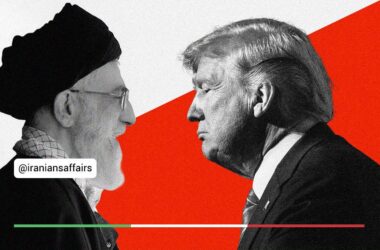Syria has once again become the battleground of fierce clashes between the Assad regime and its opposition forces. These hostilities, occurring immediately after the ceasefire agreement in Lebanon and on the cusp of Donald Trump’s presidency in the United States, have added complexity to predictions about their origins and consequences.
It has been four years since the last prolonged conflict in Syria. During this time, the Tahrir al-Sham group has managed to survive in the Idlib region with significant support from Turkey. This Islamist group has tried to project a more nationalistic image in recent years. However, the composition of its leadership, which includes former leaders of al-Qaeda in Syria, along with their actions and stances, reveals little distancing from Islamist ideologies. Differentiating them from other Salafi jihadist groups is difficult. The backing of Erdogan’s government and other regional Muslim Brotherhood supporters further underscores their Salafi roots. The group is listed as a terrorist organization by the United States and Western countries. Despite the internal purges and clashes within Salafi jihadist factions over the past seven years, figures with a Salafi jihadist background still hold power within Tahrir al-Sham. These internal conflicts appear to stem from non-ideological disputes.
Meanwhile, Assad’s government, following the grueling years of war, has been attempting to rebuild itself. Over the past year, Assad acted cautiously in the conflicts following October 7 and made serious efforts to reintegrate into the Arab League. Speculations about a potential distancing from the Islamic Republic of Iran also emerged in recent months. Assad’s reliance on Russia, deeply involved in the Ukraine conflict, has faced uncertainties, leaving the regime seeking a secure status. However, the onset of new clashes has introduced significant ambiguity and complexity.
At this point, three scenarios appear plausible. The first is the unlikely continuation of Western efforts to weaken states aligned against Israel. The other two overlapping scenarios involve the ambitions of Tahrir al-Sham and Turkey’s military actions against Assad to assert influence in the region.
On one hand, Netanyahu claims that Syria is strengthening Hezbollah to initiate hostilities following the ceasefire and remains a close ally of Tehran. Without a doubt, movements by the resistance axis, led by the Islamic Republic, represent a red line for Israel and its Western allies. Israel’s limited attacks in recent weeks highlight this concern. However, Israel cannot underestimate the threat posed by the Islamist group Tahrir al-Sham either.
In a broader context, developments in Syria could be seen as a continuation of the region’s political and security transformations following October 7. Yet reliance on Islamist forces, even if moderated with nationalism, is unlikely to be an acceptable option for the Western order. The post-October 7 transformations, often referred to as the “New Middle East Order,” are expected to revolve around the establishment of a regional power bloc led by Israel or co-led by Israel and Saudi Arabia under Trump’s return. This order, aligned with the doctrine of U.S. global leadership, aims to employ a multilateral strategy through allied regional powers. While it seeks to weaken the so-called “Axis of Chaos”—a term used in the latest NATO summit statement to describe the serious threats posed by Russia, China, the Islamic Republic, and North Korea—it is not willing to achieve this goal by any means.
On the other hand, the recent attacks by Islamist forces in Aleppo might reflect merely the ambitions of Tahrir al-Sham or, at most, Turkey’s aspirations, without direct alignment with Israel or its Western allies. Tahrir al-Sham cannot sustain its limited and protected existence in Idlib without meaningful victories. Taking advantage of the weakened position of the Islamic Republic in recent months and Russia’s constraints, Tahrir al-Sham appears to have seized the opportunity to launch significant strikes and capture territories in Syria. They have likely capitalized on Israeli and U.S. attacks on Syria and have made notable progress so far, relying on the support of their regional backers.
Another possibility is that these attacks are orchestrated and stimulated by Erdogan’s Turkey to bolster its role in the region and compensate for its lagging influence in shaping the emerging regional order. Erdogan’s ambitions and Turkey’s extensive efforts to position itself as a regional power may have played a significant role in the recent developments in Syria.
The continuation of clashes in the coming days will likely shed more light on the motives and origins of these conflicts, which seemed inevitable after October 7 and the disruption of the fragile previous order in the region.
This emerging order, characterized by a mixture of conflicts and alliances, demonstrates that if “politics” fails to create a new stable system, wars and interventions will inevitably shape it.







